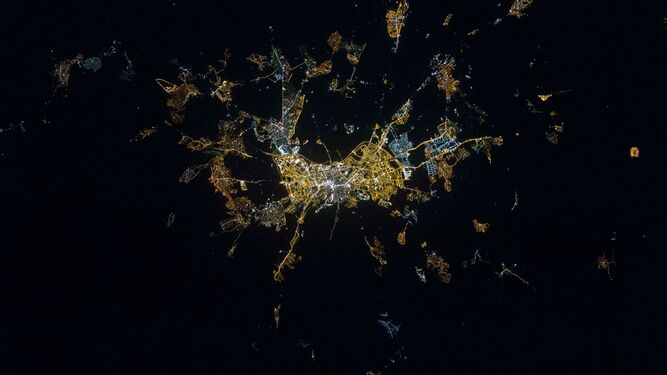The IAA studies the influence of state of alarm on light pollution levels
The project, developed by the IAA-CSIC Sky Quality Office and with the support of the Granada City Council, will analyze how current environmental conditions have affected light pollution levels. Light pollution, produced mainly by excessive night lighting or incorrect lighting, represents an energy waste and endangers human health and that of ecosystems
The environmental conditions that have occurred during confinement by COVID-19 are exceptional. On the one hand, the lighting of large surfaces (sports, commercial or monumental) and those related to business activity has decreased, and on the other, there has been a drop in the concentration of nitrogen dioxide of up to 62% in Granada. Sky brightness is also affected by the presence of other pollutants such as aerosols, strongly related to nitrogen dioxide pollution. These factors have prompted the development, from the Sky Quality Office of the Institute of Astrophysics of Andalusia, a study to analyze the evolution of light pollution before and after confinement.
"Concern about light pollution arose in the astronomical field, due to the loss of quality of the sky that damages observations, but in the last decade, different studies link excessive night lighting with problems in our health and damage to the ecosystems that, added to the energy waste, show the importance of regulating artificial lighting”, point out from the IAA-CSIC Sky Quality Office.
"The reduction in economic activity has been able to affect light emissions", pointed out from the Office. “To discern the importance of the decrease in light pollution due to less business activity or the reduction of air pollution, it is necessary to estimate, using differential photometry, the light emission profile. Additionally, if the weather conditions allow it, since completely clear skies are required, the radial profile of the sky brightness of the city of Granada and surroundings will be studied”.

The studio will use DSLR cameras and 360 cameras to document the activity on streets and facades, and in parallel, SQM and TESS photometers will be used for continuous monitoring of sky brightness. The data will make it possible to measure the curve of human activity and light pollution levels during and after confinement and to analyze the impact of aerosols on sky brightness for future modeling.
Many of the measures have been taken over the past few weeks, but some require on-site inspection of key locations and viewpoints to estimate the degree of activity, which requires official authorization and for which it has had the support of the Granada City Council.
THE IAA'S COMMITMENT TO THE QUALITY OF HEAVEN
Since the beginning of this century, the risks of light pollution, both for ecosystems and human health, have been documented due to the modification of the day and night cycles: half of Europe suffers a general “loss of night”. The IAA has participated in pioneering studies that analyze the evolution and effects of light pollution and that showed, in 2017 and 2018 respectively, that the illuminated surfaces on the planet grow on average more than 2% a year, despite the introduction of more efficient lighting systems, and that exposure to blue light at night produces an increased risk of breast and prostate cancer. This field of study was accompanied by the creation of the IAA Sky Quality Office, to defend the dark sky as a scientific, cultural and environmental resource.
Instituto de Astrofísica de Andalucía (IAA-CSIC)
Unidad de Divulgación y Comunicación
Silbia López de Lacalle - sll[arroba]iaa.es - 958230676
https://www.iaa.csic.es
https://divulgacion.iaa.csic.es

